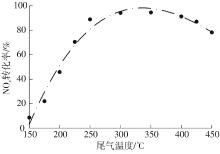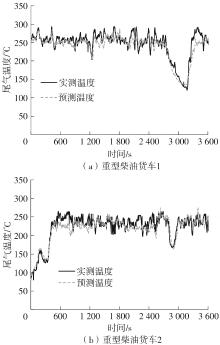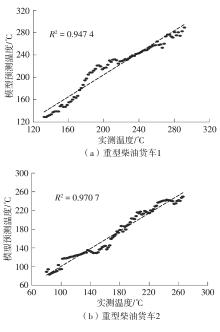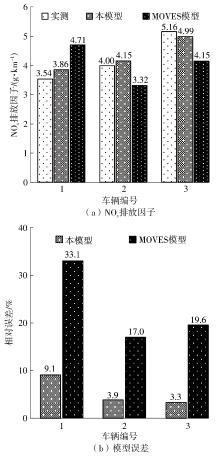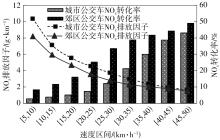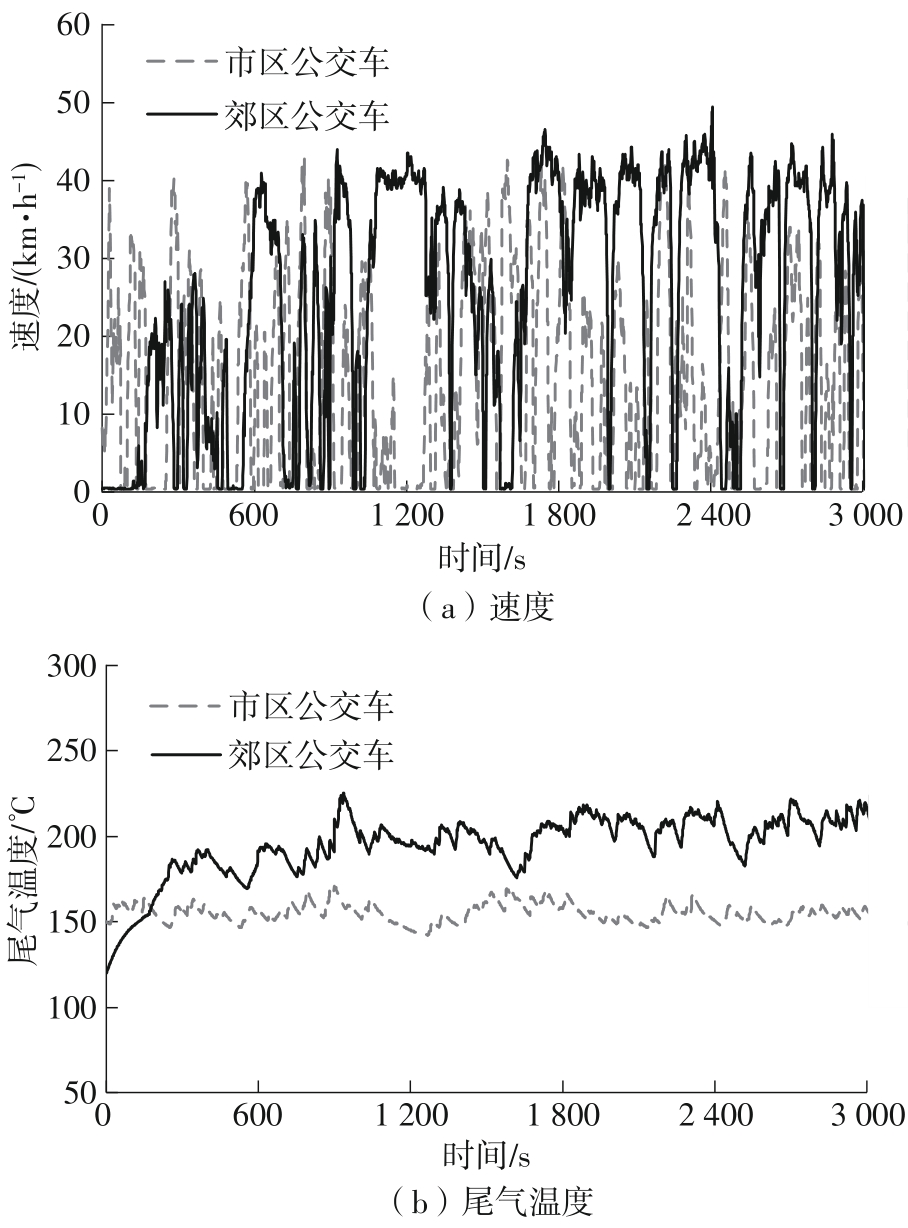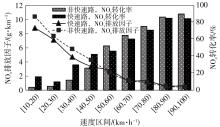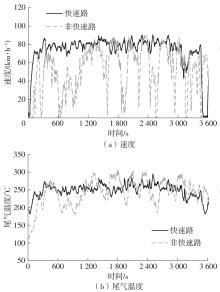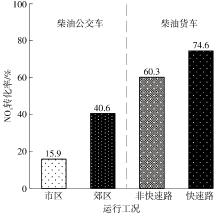| 1 |
何吉成 .基于车流量的京哈高速公路车辆大气污染物排放[J].生态科学,2015,34(1):154-157.
|
|
HE Jicheng .Estimation of air pollutant emission from vehicles in Beijing-Harbin highway[J].Ecological Science,2015,34(1):154-157.
|
| 2 |
ROPPERTZ A, FÜGER S, KURETI S .Investigation of urea-SCR at low temperatures[J].Topics in Catalysis,2017,60(3/4/5):199-203.
|
| 3 |
RAUCH D, KUBINSKI D, SIMON U,et al .Detection of the ammonia loading of a Cu chabazite SCR catalyst by a radio frequency-based method[J].Sensors and Actuators B,2014,205:88-93.
|
| 4 |
NOVA I, TRONCONI E .Urea-SCR technology for deNO x after treatment of diesel exhausts[M].New York:Springer New York,2014:86-88.
|
| 5 |
STROTS V O, SANTHANAM S, ADELMAN B J,et al .Deposit formation in urea-SCR systems[J].SAE International Journal of Fuels and Lubricants,2009,2(2):283-289.
|
| 6 |
SCHÄR C M, ONDER C H, GEERING H P,et al .Control-oriented model of an SCR catalytic converter system[EB/OL].(2004-03-08)[2023-02-12]..
|
| 7 |
YADAV D, KAVAIYA A R, MOHAN D,et al .Low temperature selective catalytic reduction (SCR) of NO x emissions by Mn-doped Cu/Al2O3 catalysts[J].Bulletin of Chemical Reaction Engineering and Catalysis,2017,12(3):415-429.
|
| 8 |
HSIEH M F, WANG J .Development and experimental studies of a control-oriented SCR model for a two-catalyst urea-SCR system[J].Control Engineering Practice,2011,19(4):409-422.
|
| 9 |
LI C X, YU L, SONG G H .Improved binning of operating modes in EPA simulator program for transit buses:case study in Beijing[J].Transportation Research Record,2017,2627(1):57-66.
|
| 10 |
ALAM A, HATZOPOULOU M .Modeling transit bus emissions using MOVES:comparison of default distributions and embedded drive cycles with local data[J].Journal of Transportation Engineering,Part A:Systems,2017,143(10):04017049/1-9.
|
| 11 |
ALAM A, HATZOPOULOU M .Deriving local operating distributions to estimate transit bus emissions across an urban network[J].Transportation Research Record,2016,2570(1):57-68.
|
| 12 |
胥耀方,于雷,宋国华 .面向路段排放测算的车辆运行模式模型[J].交通运输系统工程与信息,2016,16(6):160-168,188.
|
|
XU Yao-fang, YU Lei, SONG Guo-hua .Modeling of operating mode for evaluation of road emissions[J].Journal of Transportation Systems Engineering and Information Technology,2016,16(6):160-168,188.
|
| 13 |
张双红,于雷,宋国华 .基于工况分布的重型环卫货车NO x 排放模型[J].交通运输系统工程与信息,2019,19(3):222-229.
|
|
ZHANG Shuang-hong, YU Lei, SONG Guo-hua .NO x emission model for heavy-duty refuse trucks based on operating modes[J].Journal of Transportation Systems Engineering and Information Technology,2019,19(3):222-229.
|
| 14 |
束嘉威 .基于实际道路工况的重型柴油车排放规律研究[D].北京:清华大学,2013.
|
| 15 |
刘娟娟 .基于VSP分布的油耗和排放的速度修正模型研究[D].北京:北京交通大学,2010.
|
| 16 |
岳园圆,宋国华,黄冠涛,等 .MOVES在微观层次交通排放评价中的应用研究[J].交通信息与安全,2013,31(6):47-53.
|
|
YUE Yuanyuan, SONG Guohua, HUANG Guantao,et al .Application of MOVES in the microscopic evaluation of traffic emissions[J].Journal of Transportation Information and Security,2013,31(6):47-53.
|
| 17 |
王志红,钱超,郑灏,等 .基于PEMS的重型柴油车尾气污染物排温敏感性试验研究[J].汽车实用技术,2017(1):171-175.
|
|
WANG Zhihong, QIAN Chao, ZHENG Hao,et al .Experimental study on the exhaust temperature sensitivity of exhaust pollutants from heavy-duty diesel vehicles based on PEMS[J].Automobile Applied Technology,2017(1):171-175.
|
| 18 |
JIMÉNEZ-PALACIOS J L .Understanding and quantifying motor vehicle emissions with vehicle specific power and TILDAS remote sensing[M].Cambridge:Massachusetts Institute of Technology,1999:345-361.
|
| 19 |
SONG G, YU L, WU Y .Development of speed correction factors based on speed-specific distributions of vehicle specific power for urban restricted-access roadways[J].Journal of Transportation Engineering,2016,142(3):04016001/1-8.
|
| 20 |
MUHAMMAD A, ZHANG Y T, LIN W .Urea-SCR temperature investigation for NO x control of diesel engine[J].MATEC Web of Conferences,2015,26:03002/1-4.
|
| 21 |
SONG G, YU L .Estimation of fuel efficiency of road traffic by characterization of vehicle-specific power and speed based on floating car data[J].Transportation Research Record,2009,2139(1):11-20.
|
| 22 |
FAN P F, SONG G H, ZHU Z J,et al .Road grade estimation based on large-scale fuel consumption data of connected vehicles[J].Transportation Research Part D,2022,106:103262/1-20.
|
| 23 |
DAVIDZON M I .Newton’s law of cooling and its interpretation[J].International Journal of Heat and Mass Transfer,2012,55(21/22):5397-5402.
|
| 24 |
FENG X, GE Y, TAN J,et al .Effects of electrically heated catalyst on the low temperature performance of vanadium-based SCR catalyst on diesel engine[EB/OL].[2022-10-21]..
|
| 25 |
CHEN C T, TAN W L .Mathematical modeling,optimal design and control of an SCR reactor for NO x removal[J].Journal of the Taiwan Institute of Chemical Engineers,2012,43(3):409-419.
|
